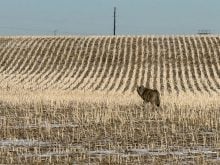Farm management editor D’Arce McMillan is part of a delegation accompanying federal agriculture minister Ralph Goodale on a trade mission to Japan and Indonesia. The trip is designed to investigate market opportunities for Canadian agricultural products. McMillan files these reports from Tokyo.
TOKYO, Japan – Some Canadian food producers might think that Japan, considering its anemic stock exchange, a weakened currency and an economy that doesn’t send off sparks the way it once did, is no longer the place to be in Asia.
But the counsellor for food and fish at the Canadian embassy in Japan suggests nothing could be further from the truth.
Read Also

Agritechnica Day 3: Hybrid drive for a combine, data standards keep up to tech change and tractors of the year
Agritechnica 2025 Day 3: Hybrid drive for a combine, data standards keep up to tech change and tractors of the year.
Ron Davidson told members of a Canadian food trade mission led by federal agriculture minister Ralph Goodale here last week that the Japanese economic bubble might have burst in the 1990s, but the market offers unequalled opportunity for foreign exporters.
That is especially true for food exporters.
“In 1960, agriculture represented nine percent of Japan’s GDP (gross domestic product.) Today, it is two percent. In 1960, Japan was 79 percent food self-sufficient and today it is 42 percent,” he said. A large portion of what Japan produces is rice.
Davidson said Japanese agriculture will fall further due to several factors. Average farm size is still only 1.5 hectares and agricultural land costs are high, making land amalgamation expensive.
Only 12 percent of Japanese farmers make it a full-time job.
And prairie farmers are spring chickens compared to their Japanese counterparts. Sixty percent of farmers here are older than 60, and as they retire, few sons or daughters take over the farm.
International trade agreements are reducing Japan’s high tariff barriers and non-tariff trade limits are also falling.
The result is that Japan is the world’s largest net food importer and a market that has grown at an average of 15 percent for the past eight years.
Food and beverage imports in 1992 were just over $25 billion (U.S.) and by 1995 had risen to $34 billion.
In 1996, Canada exported $1.8 billion to Japan, but could have done better, Davidson said.
Japan is Canada’s second largest market for food and beverages after the United States.
But in terms of suppliers to Japan, Canada stands sixth. The U.S. is first with a 29 percent market share, China is next with 10, Australia and Taiwan both have about six percent and Thailand has about 5.5 percent.
Canada has 5.3 percent of the market.
“Our competition here is the Americans, Australians, Europeans and Chinese, Thailand. If we can export to those countries, there is no reason why we can’t export directly to Japan.”
Although the majority of Canada’s food exports to Japan are raw grains and oilseeds, the potential for growth lies in processed products, he said.
“Meat is probably the area where there is the greatest opportunity to make a substantive increase in dollar terms in the short term.”
From the late 1980s to the mid 1990s, Japanese beef consumption more than doubled. Almost all the increase was supplied by imported product, mainly from the United States and Australia. Canada’s market share is minuscule.
Pork consumption has been stable, but domestic production has fallen to 1.4 million tonnes in 1993 from 1.6 million in 1989. Imports have accordingly risen by 200,000 tonnes to 600,000. Canada has managed to maintain its market share of about five percent.














